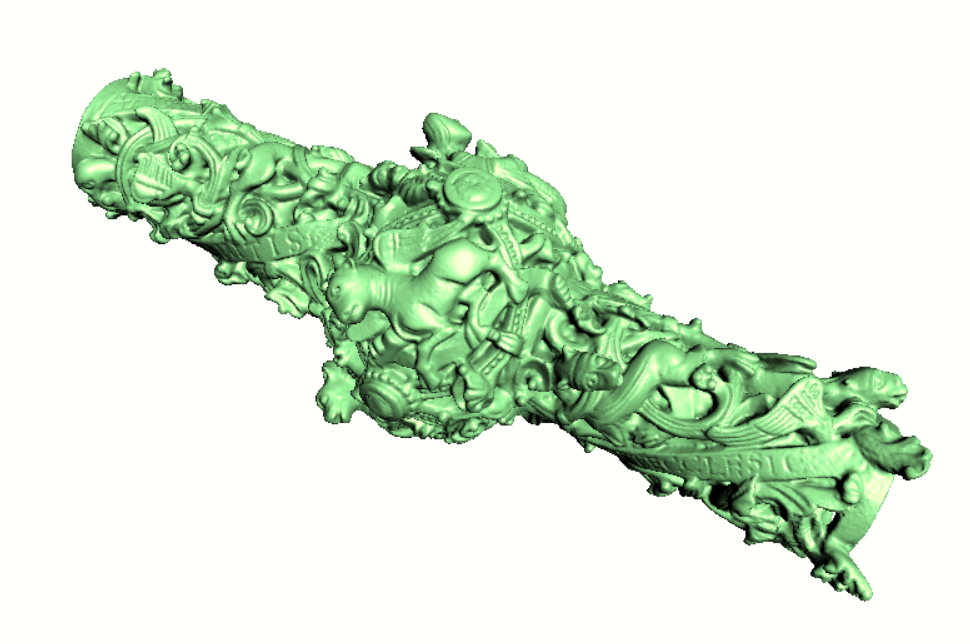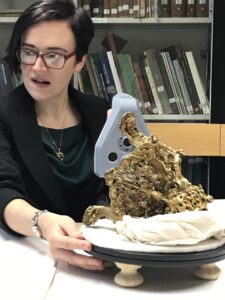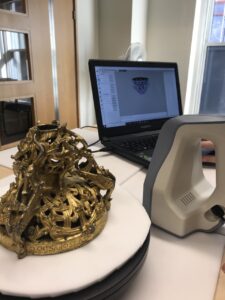Working with Rebecca Philips from Gloucester Cathedral and Paul Govan from Renishaw we created a 3D printed replica of The Gloucester Candlestick. I had the honour of 3D scanning this wonderful object housed at the V&A and listed as one of their top 20 objects.
The Gloucester Candlestick dates from between 1104–13 and originally belonged to the Church of St Peter in Gloucester (now Gloucester Cathedral). This type of intricate metalwork was commonly melted down and reused, its survival is both remarkable and significant.
Rebecca approached me with a project idea to create a replica of the candlestick that would be housed at the cathedral for all to see. Together with Paul we visited the V&A to see the candlestick, where I produced a series a test scans and discussed with conservators how to safely 3D scan the candlestick.
Once these were complete and Renishaw were happy with the quality of the scan data, I returned to the V&A to scan the candlestick. The candlestick was separated into its 3 sections, a base, middle and top section, and each section was scanned in segments to ensure the whole surface of the candlestick was captured. The reflective nature of the surface meant repeatedly scanning the same surface area, which resulted in some very large file sizes. Once the candlestick had been 3D scanned I spent the next two weeks processing, aligning and cleaning the data, before sending the completed scans to Paul.
Working on this project has been a wonderful experience and as a heritage professional I greatly enjoyed exploring the captured detail of the intricate metalwork and inscriptions.





